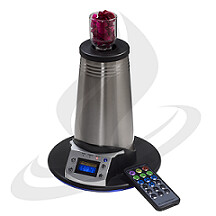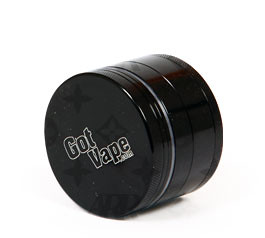Vapors that are produced in a vaporizer has been already scientifically proven to be a lot less harmful than the smokes that come out from burning herbs for way long time back, and people (those who can actually afford a vaporizer of course) since than have been using vaporizers for more than just that semi-addictive fresh aroma of their favorite herbs. But what is really going on inside a vaporizer, that makes them extract these ingredients so elegantly that not only are getting all of the good stuff, but at the same time we’re able to avoid the bad stuff as well?
First, let’s go back to basics of vaporizer mechanism. We all know that vaporizers only use pure heat in a partial vacuum right? This heating process doesn’t involve burning the herb because of one single component that is left out in the closed environment of a vaporizer, and that is none other than the combustion catalyst, oxygen. Oxygen is basically removed form the system, allowing the vaporizer to heat the herb purely (through conduction), or to heat the herb using water vapor (through convection).
But heating it alone doesn’t make all the active ingredients of the herb come out, because it has to be heated at an ample amount at a specific temperature for a certain active ingredient to vaporize out. Most commercial dealers of these herbs usually provide the temperatures to their customers, so you don’t have to worry about this, what we are trying to observe is the specific chemicals that are released, at what rate, and their relative densities.
Let’s take the elusive cannabis plant for example (for those of you who haven’t heard the name “cannabis”, don’t worry, I know that you already know this plant by another name, which is none other than marijuana). There are at least 60 kinds of compounds (most of which are aromatic) that are present in the cannabis plant, excluding the other types of cannabinoids that are also present. You have to heat the plant at a round 126°C (258.8°F) to start vaporizing these compounds for inhalation, but the other cannabinoids will not start to vaporize unless we heat the plant at a considerable temperature starting at 149.3°C (300.74°F) for THC (tetrahydrocannabinol) and higher for the other cannabinoids. What does this tells us about the quality of vapor released in a vaporizer?
So in conclusion, we can say from our observation of vaporizing cannabis that you have to heat the herbs as high as you can to obtain all of the active ingredients that is in the herb. But you have to know that upon heating the plant at such high temperatures, you are now risking the plant to be burned, and we know that burning herbs would never out-function any vaporizing technique, so what do we do now?
Most commercial vaporizers cannot do this, but you’ll have to heat the plant as quickly as you can, “flash vaporizing” it so that all of the active ingredients is retained while saving your herb from being burned (unless you want an aromatic session of vaping first before going to the therapy session with the aroma long gone after).
Heating essential oils is basically just turning the oil into vapor (usually to be combined with other vapors of other herbs) for inhalation, and further discussion of its chemical reactions due to heat will not be necessary.
skip to main |
skip to sidebar
If you seek the wonderful experience of vaporizing for a low cost, than the homemade vaporizer is the answer for you.
--The Homemade Vaporizer Guru--
Welcome to the Homemade Vaporizer Blog. This blog is dedicated to providing people with the best homemade vaporizer design on the web along with the most up to date information possible. If you're not interested in building a vaporizer, you can read the many vaporizer reviews and articles for some great information. Enjoy!
If you seek the wonderful experience of vaporizing for a low cost, than the homemade vaporizer is the answer for you.
--The Homemade Vaporizer Guru--
My Vaporizer Articles
- How to Make a Homemade Vaporizer
- Choosing the right Homemade Vaporizer Heat Gun
- Finding the best Vaporization Temperature
- How do Vaporizers Work??
- Health Benefits of Vaporizing
- Why You Should Vaporize...
- Vapormatic Vaporizer Review
- V Tower Extreme Vaporizer Review
- How to Make Hash Oil with Butane
- Vaporizer Affiliate Programs
- Volcano Vaporizer Problems and Review



